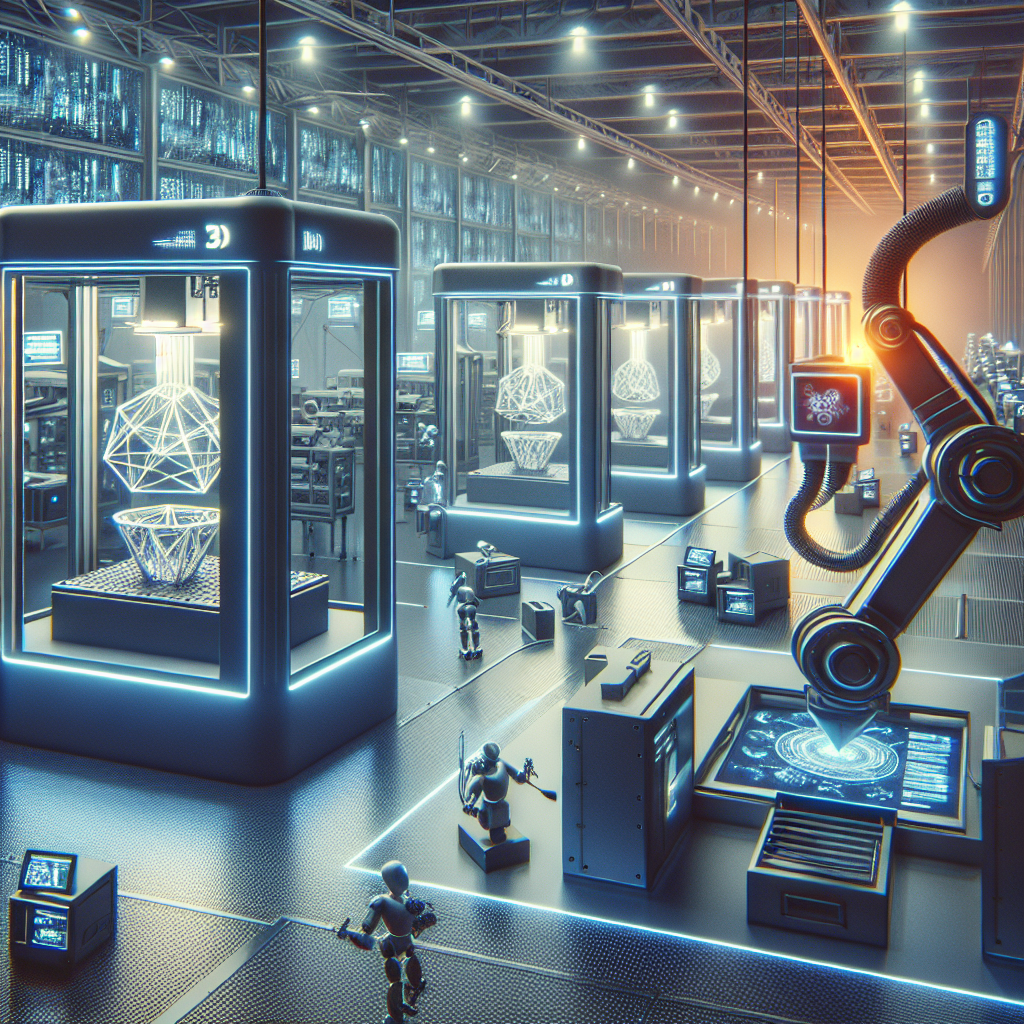The Future of AI-Powered 3D Printing in Manufacturing
In recent years, 3D printing technology has made significant advancements in various industries, including manufacturing. The integration of artificial intelligence (AI) with 3D printing has further revolutionized the way products are designed and produced. AI-powered 3D printing is poised to transform the manufacturing industry by enhancing efficiency, reducing costs, and enabling the creation of complex and innovative designs.
AI-powered 3D printing combines the capabilities of artificial intelligence, machine learning, and 3D printing technology to automate and optimize the manufacturing process. AI algorithms can analyze large amounts of data and make informed decisions to improve the quality and efficiency of 3D printing. By leveraging AI, manufacturers can streamline the design process, optimize material usage, and reduce waste.
One of the key benefits of AI-powered 3D printing is its ability to generate complex and innovative designs that are difficult or impossible to create using traditional manufacturing methods. AI algorithms can analyze design specifications and optimize the geometry of a product to enhance its performance and functionality. This allows manufacturers to produce customized products that meet the specific needs of their customers.
Moreover, AI-powered 3D printing enables manufacturers to improve the quality of their products by detecting and correcting defects in real-time. AI algorithms can monitor the printing process and identify any anomalies or errors that may affect the final product. By addressing these issues early on, manufacturers can reduce the likelihood of defects and improve the overall quality of their products.
Another advantage of AI-powered 3D printing is its ability to optimize the use of materials and reduce waste. AI algorithms can analyze the properties of different materials and recommend the most suitable materials for a particular application. This not only helps manufacturers reduce costs but also minimizes the environmental impact of production by reducing waste and energy consumption.
In addition to these benefits, AI-powered 3D printing can also improve the efficiency of the manufacturing process. By automating certain tasks and optimizing production workflows, manufacturers can reduce lead times and increase productivity. This allows them to respond more quickly to changing market demands and deliver products to customers faster.
Overall, the future of AI-powered 3D printing in manufacturing looks promising. As AI technology continues to advance, we can expect to see even more innovative applications of AI in 3D printing. From personalized medical devices to sustainable construction materials, AI-powered 3D printing has the potential to revolutionize the way products are designed, manufactured, and delivered.
FAQs:
Q: How does AI-powered 3D printing differ from traditional 3D printing?
A: AI-powered 3D printing integrates artificial intelligence and machine learning algorithms with 3D printing technology to automate and optimize the manufacturing process. This allows manufacturers to improve the quality, efficiency, and customization of their products.
Q: What are some of the key benefits of AI-powered 3D printing in manufacturing?
A: Some of the key benefits of AI-powered 3D printing include the ability to generate complex and innovative designs, improve product quality, optimize material usage, reduce waste, and enhance manufacturing efficiency.
Q: How can AI-powered 3D printing help manufacturers reduce costs?
A: AI-powered 3D printing can help manufacturers reduce costs by optimizing material usage, reducing waste, improving product quality, and streamlining production workflows. This allows manufacturers to produce high-quality products at a lower cost.
Q: What are some of the potential applications of AI-powered 3D printing in manufacturing?
A: Some potential applications of AI-powered 3D printing in manufacturing include personalized medical devices, customized consumer products, sustainable construction materials, and innovative aerospace components.
Q: What are the challenges of implementing AI-powered 3D printing in manufacturing?
A: Some of the challenges of implementing AI-powered 3D printing in manufacturing include the high cost of AI technology, the need for specialized training and expertise, and the integration of AI algorithms with existing manufacturing systems. However, as AI technology continues to advance, these challenges are expected to become more manageable.

